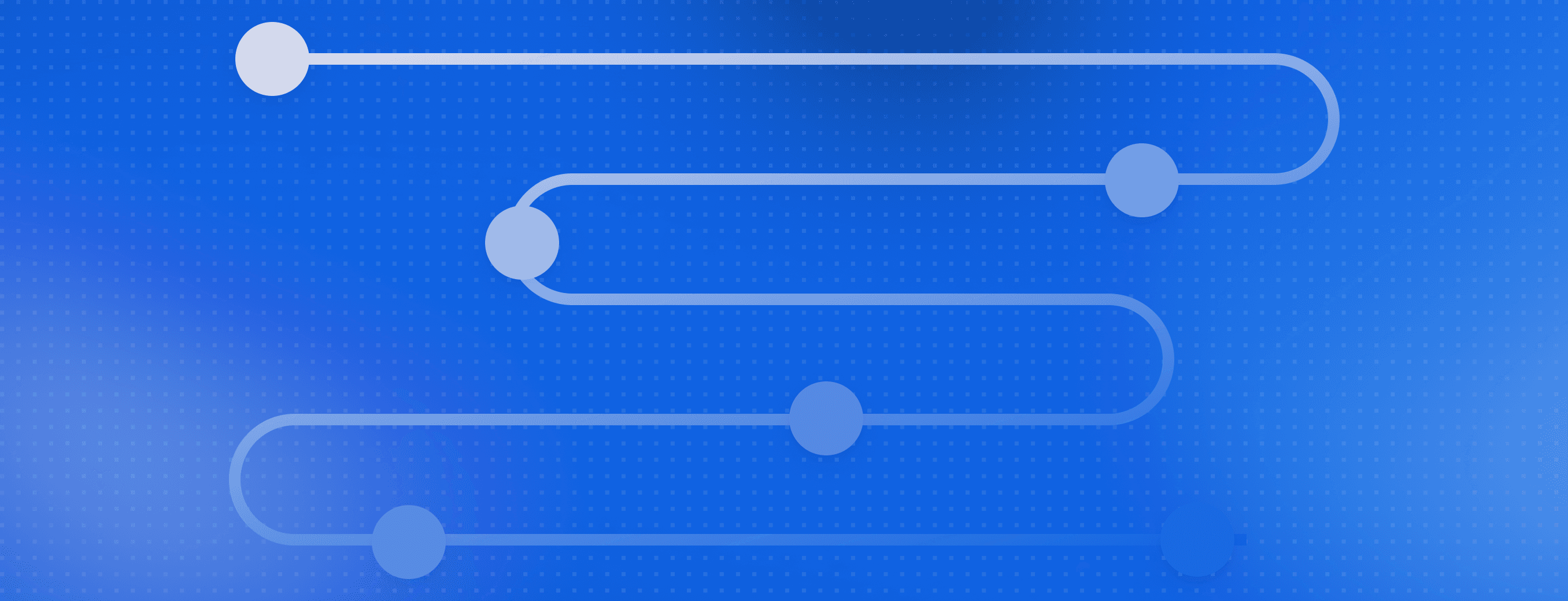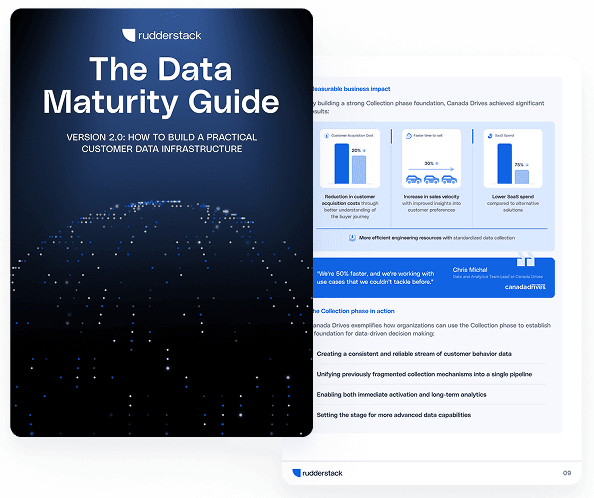Webhook vs. API: What's the difference and when to use each?

You can connect two apps in more ways than you might think. Modern integration architectures offer multiple approaches, from traditional request-response patterns to event-driven models. Sometimes, the real challenge is knowing when to ask for information and when to let it come to you.
Choosing between webhooks vs. APIs can dictate whether your data arrives exactly when you need it or gets lost in a flood of requests. The wrong integration pattern might lead to system overload, latency issues, or missed critical events.
Main takeaways:
- APIs use a request-response (pull) model where you control data retrieval, making them ideal for on-demand access, complex queries, and multi-step workflows
- Webhooks use a push model, automatically sending data to your endpoint when events occur, which is optimal for real-time notifications and high-frequency event processing
- APIs require recurring polling for updates, which can be resource-intensive, while webhooks reduce overhead by eliminating unnecessary requests and delivering data in near real-time
- Webhooks introduce asynchronous challenges and require robust endpoint reliability and security, while APIs offer more predictable control, error handling, and retry mechanisms
- Combining webhook and API integrations enables you to unify real-time event delivery with flexible, on-demand data access. This approach is supported by RudderStack's unified data infrastructure
What is an API?
An API (Application Programming Interface) is a set of rules and protocols that allows different software applications to communicate with each other. APIs work through a request-response pattern where your application sends a specific request to another system and receives structured data back according to predefined specifications.
APIs are the backbone of modern software integrations, powering countless digital interactions daily. According to Postman's 2024 State of the API Report, 74% of organizations now describe themselves as "API-first," up from 66% in 2023.
When you check the weather on your phone, the app retrieves data from a weather service API. When you book a flight online, multiple APIs coordinate to check availability, process payments, and confirm reservations, all behind the scenes.
Did you know: APIs account for 57% of all internet traffic, reflecting their central role in digital ecosystems.
Most web services use REST (Representational State Transfer) APIs that operate over HTTP with standardized methods. These APIs follow architectural constraints like statelessness and cacheable responses, communicating through standard HTTP methods:
- GET: Fetch information (like user profiles or product details) without modifying server data, ideal for retrieving resources in a safe, idempotent manner
- POST: Create new records (like submitting a form or creating a user account), sending data to the server that causes a change in state
- PUT/PATCH: Update existing data, with PUT replacing entire resources and PATCH applying partial modifications to specific fields
- DELETE: Remove resources from the system, permanently eliminating the specified data
APIs require you to actively request data when you need it through these methods.
This pull-based approach gives you precise control over timing and content retrieval, but means you must implement polling mechanisms to regularly check for updates, consuming bandwidth and processing power even when no changes exist.
What is a webhook?
A webhook is an automated HTTP-based message sent from one system to another when a specific event occurs. Unlike APIs, where you request information, webhooks push data to you automatically through callbacks to pre-registered endpoints.
Think of webhooks as digital messengers that deliver notifications about events without being asked. They're event-driven, operating on a publisher-subscriber model that only sends data when something important happens—like a payment being processed or inventory reaching a threshold.
To use webhooks, you register a URL endpoint with a service and specify which events you want to monitor. When a relevant event occurs, the service sends an HTTP POST request with a JSON or XML data payload to your endpoint, which your application then processes according to your business logic.
Webhooks explained: If APIs are like calling someone to ask for information, webhooks are like having someone call you when they have something important to tell you.
Webhooks are ideal for real-time updates in distributed systems. Instead of repeatedly checking if something has changed (polling), you receive instant notifications when changes happen, reducing latency to milliseconds rather than minutes.
Common webhook use cases include:
- Payment processing notifications (some solutions like Stripe handle 500 million API requests per day), instantly alerting your system about transaction statuses
- Chat message alerts that trigger notifications across devices when new messages arrive
- Inventory updates that automatically reorder products or alert staff when stock reaches critical levels
- Form submissions that trigger multi-system workflows like CRM updates and email confirmations
- User authentication events that enable security monitoring and fraud detection across platforms
With a webhook, you don't waste computational resources, network bandwidth, and database queries polling for updates that might not exist. This efficiency becomes particularly valuable at scale, where eliminating unnecessary requests can significantly reduce infrastructure costs and system load.
Learn more about modern data collection
Want to dive deeper into how APIs and webhooks fit into the data ecosystem? Explore our guide to data collection methods and how they shape downstream analytics.
Webhook vs. API: core differences
The fundamental difference between webhook and API integration methods lies in how data flows between systems.
APIs use a "pull" approach where your application actively requests information, while webhooks employ a "push" mechanism where data is automatically sent when specific events trigger.
Growth stat: Industry forecasts project that the global API management market will grow from $7.6 billion in 2024 to $16.9 billion by 2029.
Data flow and communication patterns
APIs (pull method):
- You initiate requests for data through HTTP methods (GET, POST, PUT, DELETE)
- Communication happens when you decide, giving you precise control over data retrieval
- You control the timing and frequency of requests, allowing for scheduled or on-demand access
- Requires polling to get updates, which means sending recurring requests at intervals to check for changes
- Client maintains the responsibility for checking data currency and freshness
Webhooks (push method):
- The server initiates communication by sending HTTP POST requests to your endpoint
- Data is sent automatically when events occur, without requiring your application to check
- Timing is determined by when events happen in the source system, ensuring near-real-time updates
- No polling needed, reducing unnecessary requests and server load
- Your application must maintain a publicly accessible endpoint to receive incoming webhook data
Table: API vs. webhook features
| Feature | API | Webhook |
|---|---|---|
| Data flow direction | Client pulls from the server | Server pushes to client |
| Initiation | Client-initiated | Server-initiated |
| Timing | On-demand or scheduled | Event-triggered |
| Latency | Depends on polling frequency | Near real-time |
Resource usage and efficiency
API webhook comparisons often highlight efficiency differences. APIs can be resource-intensive if you need frequent updates, as you must poll regularly.
Webhooks are more efficient for event monitoring. They eliminate unnecessary requests and reduce server load since data is only sent when needed.
For high-volume data or real-time requirements, a webhook API integration often provides better performance and lower latency, especially with modern protocols where HTTP/2 multiplexes messages.
Control and error handling
The difference between webhooks and API approaches extends to error management and reliability:
APIs:
- Predictable: You control when requests happen, allowing for planned system loads and maintenance windows
- Retryable: You can retry failed requests immediately with custom backoff strategies and error-specific handling
- Verifiable: You can validate responses as they arrive and implement synchronous error handling with immediate feedback loops
- Stateful: You can maintain context between requests through session tokens or request parameters, enabling complex multi-step operations
- Rate-limiting control: You can adjust request frequency based on response headers or service conditions
Webhooks:
- Asynchronous: Events may arrive in any order, requiring idempotent processing and robust event sequencing logic
- Potentially unreliable: Your endpoint must be available to receive data, necessitating high-availability infrastructure and queue-based architectures
- Limited retries: Most services retry failed deliveries using exponential backoff, but not indefinitely
- Requires validation: You must verify webhook authenticity through signatures, shared secrets, or IP whitelisting to prevent security breaches
- Dead letter handling: Failed webhook events need explicit error recovery mechanisms to prevent data loss
When to use webhooks
Webhooks excel in specific scenarios where real-time data delivery is crucial. Here's when to choose webhooks:
Real-time notifications and events
Use webhooks when immediate action is required based on events:
- Payment processing: Get instant notifications when transactions succeed or fail
- Security alerts: Receive immediate alerts about suspicious activities
- User engagement: Track comments, likes, or shares as they happen
- Inventory changes: Update systems instantly when stock levels change
High-volume event processing
Webhooks are ideal for handling frequent events efficiently:
- IoT data streams: Process sensor data as it's generated
- User activity tracking: Capture clicks, page views, and interactions
- System monitoring: Receive alerts when metrics exceed thresholds
- Data synchronization: Keep multiple systems in sync in real-time
When to use APIs
APIs remain the preferred method for many integration scenarios. Here's when APIs make more sense:
On-demand data retrieval
Choose APIs when you need control over when and how data is accessed:
- User-initiated searches: Fetch results when users request them
- Reports and analytics: Generate data summaries on schedule
- Complex queries: Request specific data with parameters and filters
- Large data transfers: Control pagination and batch processing
API hooks provide flexibility for customized data retrieval based on specific parameters.
Complex integrations and workflows
APIs work better for multi-step processes:
- Sequential operations: When steps must happen in a specific order
- Conditional logic: When next steps depend on previous results
- Data transformation: When processing is needed between steps
- Error recovery: When graceful handling of failures is critical
API webhooks combinations often provide the most robust solution for complex workflows.
Simplify event delivery with RudderStack
RudderStack supports both webhook and API integrations, letting you unify real-time events with on-demand access, without building custom connectors.
How to implement webhooks and APIs
Implementing effective integrations requires following best practices:
For webhooks:
- Ensure your endpoint is reliable and can handle unexpected downtime with redundant infrastructure, health checks, and queue-based buffering mechanisms
- Implement proper authentication to verify webhook sources using HMAC signatures, shared secrets, or JWT tokens to prevent spoofing attacks
- Process webhooks asynchronously to prevent timeouts by immediately acknowledging receipt with a 200 response, then processing the payload in a background worker
- Set up proper error handling and logging with automatic retry mechanisms, dead-letter queues for failed events, and structured logging for troubleshooting
For APIs:
- Use appropriate authentication methods with proper token lifecycle management and scope-based permissions
- Implement rate limiting to prevent overuse through token bucket algorithms, clear rate limit headers, and graceful degradation during traffic spikes
- Cache frequently requested data to improve performance using strategies like TTL-based invalidation, ETags, or Redis for distributed environments
- Handle pagination for large data sets with cursor-based approaches, consistent page sizes, and clear metadata about total results and next page tokens
For both:
- Use HTTPS for all communications with minimum TLS 1.2, proper certificate validation, and HSTS headers
- Monitor integration performance with detailed metrics on latency, error rates, and throughput across each integration point
- Implement comprehensive logging with correlation IDs that trace requests across systems, structured formats (JSON), and appropriate log levels
- Design for scalability as volume grows through horizontal scaling, stateless architecture patterns, and infrastructure-as-code deployment pipelines
A webhook REST API implementation often complements the other in robust integration architectures, with webhooks handling real-time events while APIs provide on-demand access and complex query capabilities.
Ready to unify webhooks and APIs in your stack?
RudderStack makes it easy to integrate both real-time webhooks and traditional APIs while maintaining governance and privacy.
Unify real-time and request-based data delivery with RudderStack
The API vs. webhook debate isn't about choosing one over the other. Most organizations benefit from using both approaches together.
RudderStack provides a unified solution for managing both webhook and API integrations. With RudderStack, you can:
- Collect event data from any source
- Transform and validate data in transit
- Deliver information to your warehouse and downstream tools
- Maintain governance and privacy controls throughout
RudderStack's cloud-native infrastructure ensures you maintain full control of your data while benefiting from both real-time webhook delivery and on-demand API access.
To learn how RudderStack can help you implement both webhook and API integrations while maintaining full data governance, request a demo.
FAQs about webhooks vs. APIs
Are webhooks the same as APIs?
No, webhooks and APIs are different integration methods. APIs require you to request data, while webhooks automatically push data to you when events occur.
What are webhooks used for?
Webhooks are used for real-time notifications, event-driven workflows, and automated data synchronization between systems without constant polling.
Is a webhook a push or pull?
A webhook is a push mechanism. The source system pushes data to your endpoint when triggered by an event, unlike APIs, where you pull data by making requests.
What are the disadvantages of webhooks?
Webhooks can be less reliable if your receiving endpoint goes down, may have limited retry capabilities, and can be more difficult to debug than request-based APIs.
Published:
November 20, 2025

Data collection crossroads: When to use RudderStack or Google Tag Manager (or both)
In this post, we’ll review three options for how to implement RudderStack with Google Tag Manager, based on experience we’ve gathered across thousands of implementations.

Data integration framework: Components and best practices
A well-designed data integration framework can unify your data architecture, enabling automated pipelines, reducing inconsistencies, and providing a single source of truth for analytics and operations.

Data onboarding: How to streamline your process
In this article, we'll break down the key steps of the onboarding process, highlight common pitfalls, and share best practices to help you streamline integration while maintaining data accuracy, governance, and compliance.






